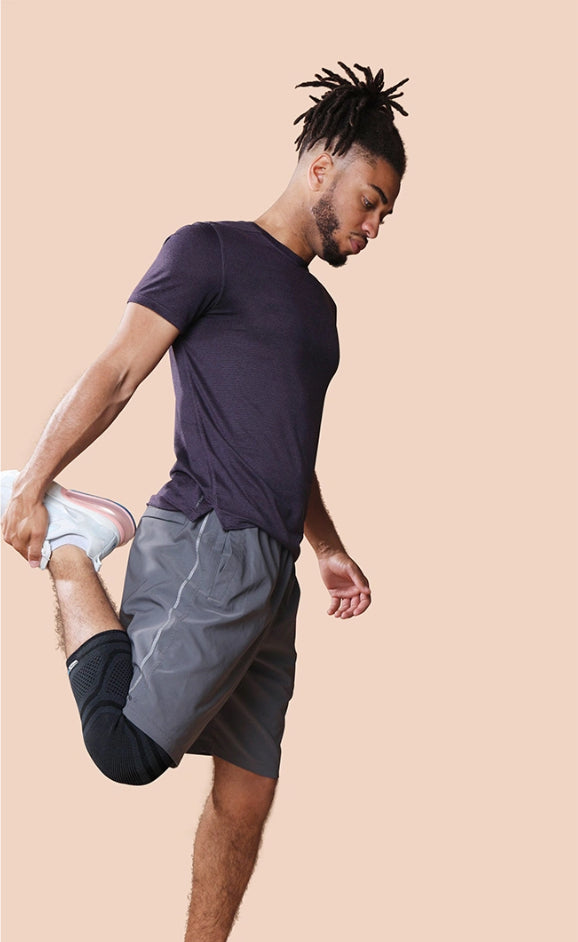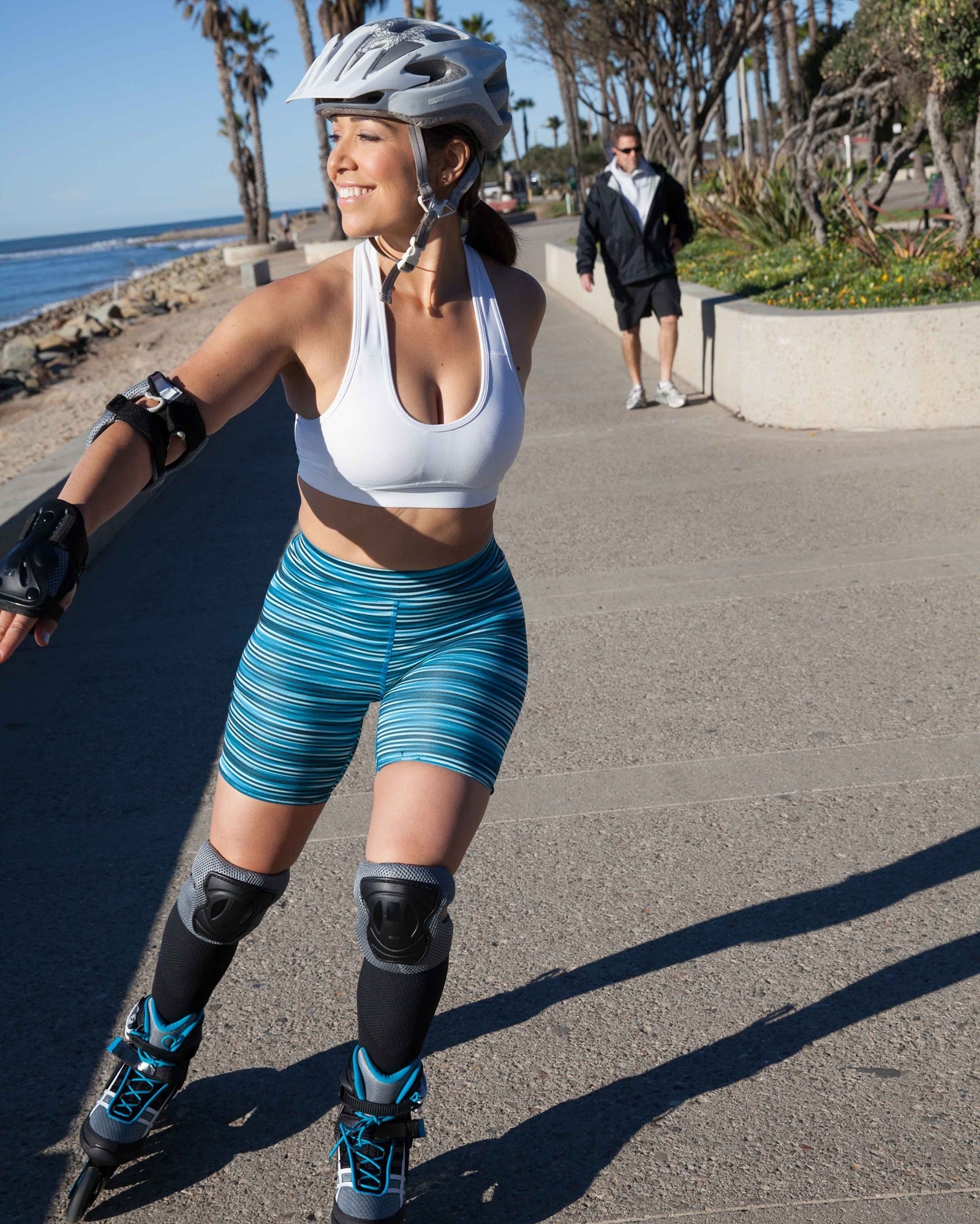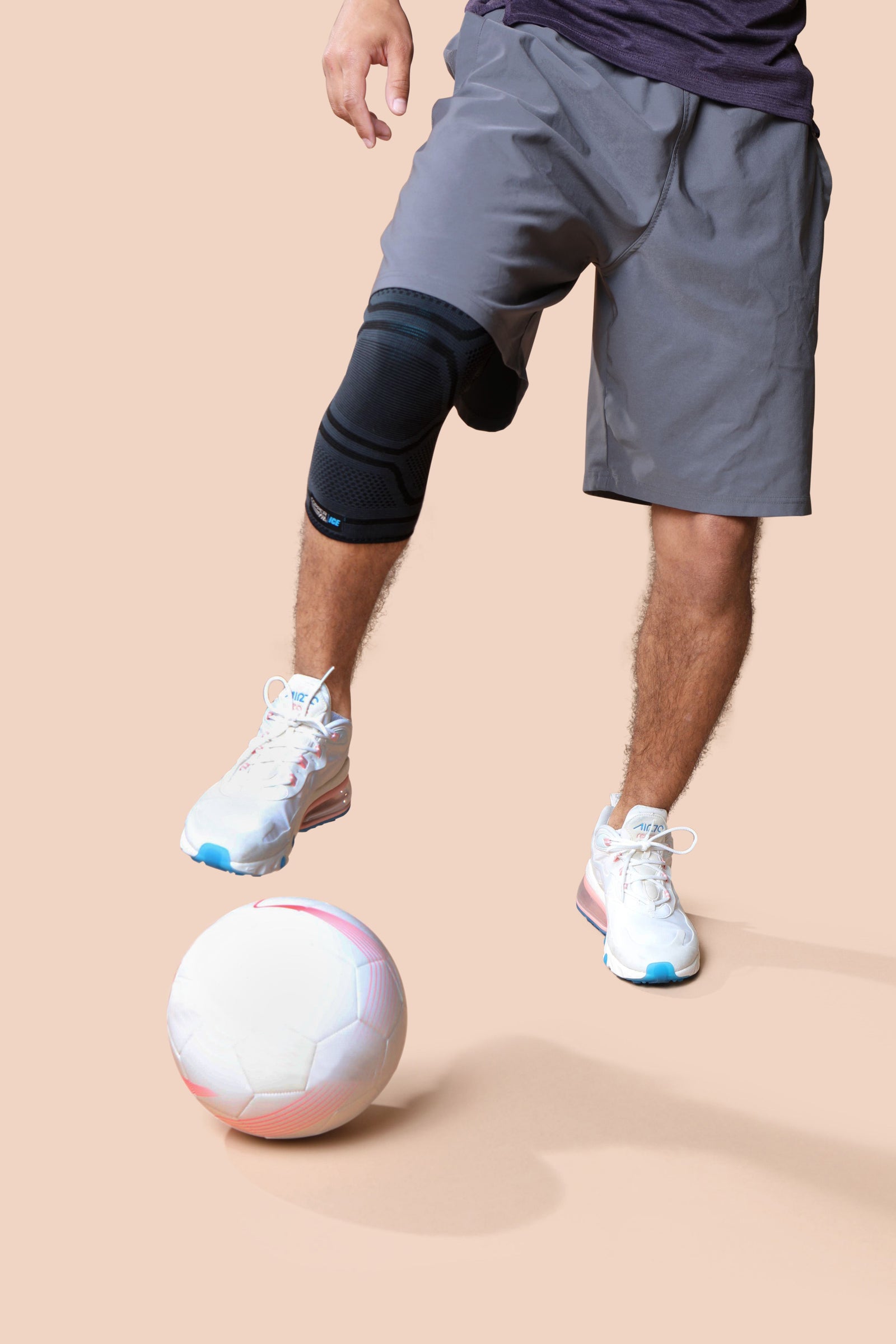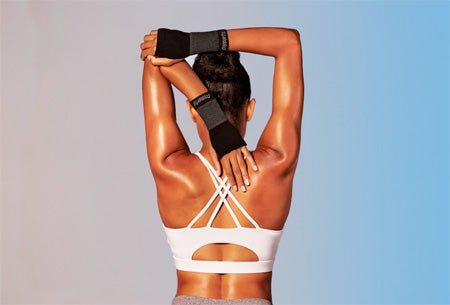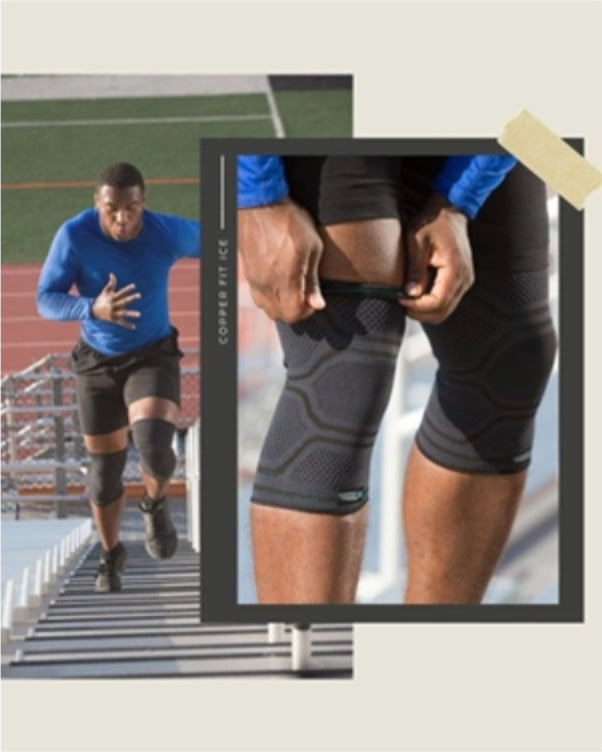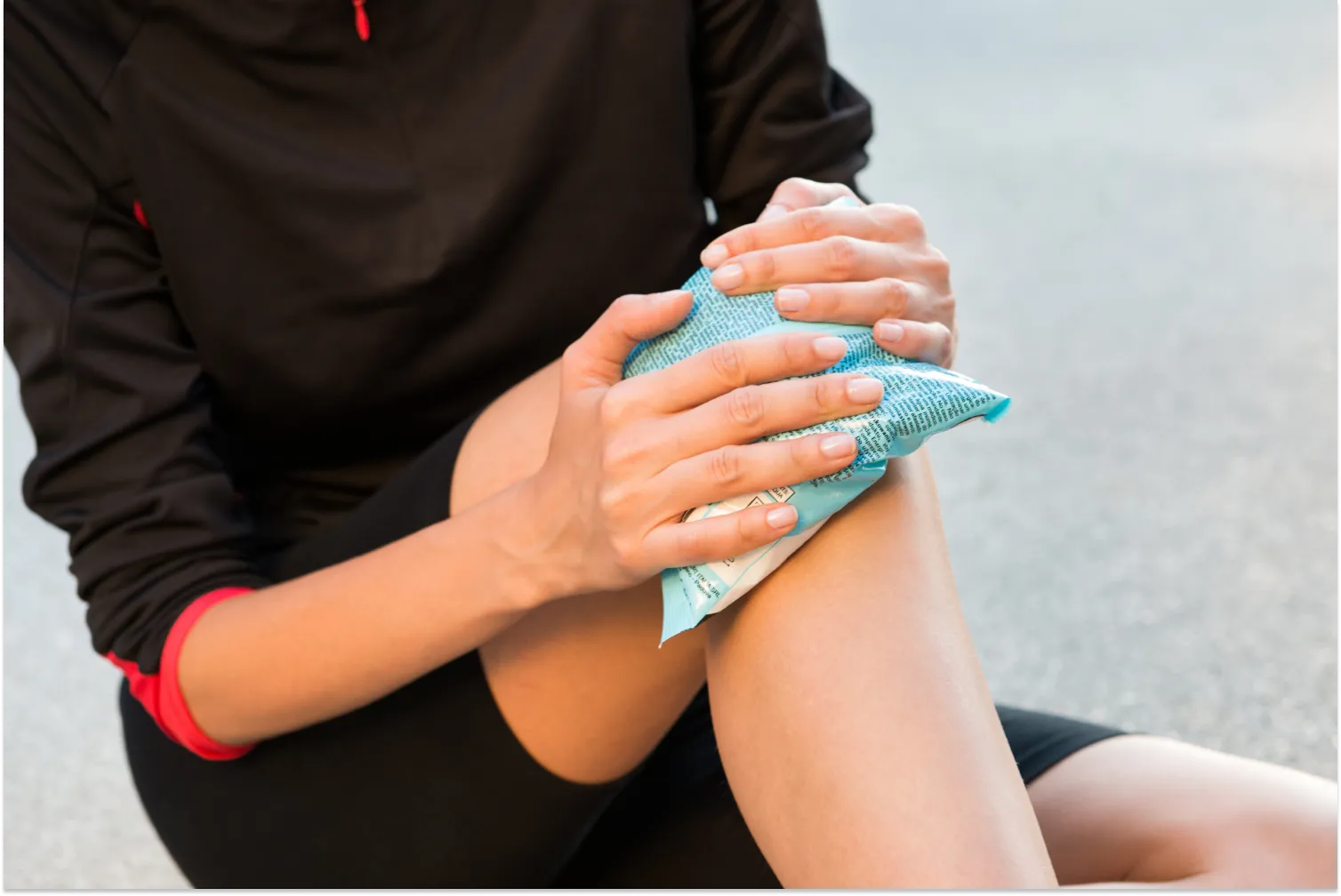
Muscle soreness is an inevitable part of an active lifestyle, often acting as an unsolicited reminder of our physical exertions. However, the question of whether to treat it with heat or ice often arises when faced with pain or discomfort.
While both offer unique advantages, understanding when and how to utilize each becomes essential, especially when the objective is swift recovery and relief. Copper Fit, as a leader in the realm of holistic wellness, recognizes the importance of this knowledge, aiming to demystify the age-old heat vs. ice debate for its users.
Why Do Muscles Get Sore?
Our body's intricate mechanisms responding to physical strain are at the root of muscle soreness. When we exert ourselves beyond the customary limits, whether through a new exercise routine or pushing our boundaries, microscopic tears occur in the muscle fibers. As the body repairs these tears, soreness sets in, signaling recovery in action.
However, it's vital to distinguish between general muscle soreness and the onset of an acute injury. While the former is often a result of standard wear and tear and typically subsides within a few days, the latter requires immediate attention.
Acute injuries, often characterized by sudden and severe pain, swelling, or inability to place weight on a limb, arise from direct impacts, overexertion, or incorrect technique. On the other hand, chronic pains are persistent aches that last beyond the typical recovery window and might indicate underlying conditions or repeated strain.
Recognizing the type of pain or discomfort you're experiencing is the first step in determining the best remedy, whether grabbing a heating pad or reaching for an ice pack. Armed with this knowledge, individuals can make informed decisions on their path to recovery.
What Are the Benefits and Uses of Heat Therapy?
Warmth has always been an instinctive comfort for the human body. When it comes to muscle relief, heat therapy takes center stage, offering several benefits.
At its core, heat works by increasing blood flow to the affected area, carrying essential nutrients that aid in repairing and recovering damaged tissues. Additionally, heat can aid in relaxing and loosening tissues, alleviating tight muscles and muscle spasms.
When Should You Use Heat Therapy?
Some of the scenarios in which you should use heat therapy include:
-
Muscle Soreness: Prolonged soreness post-exercise can be alleviated with the gentle application of heat. It provides relief by increasing blood flow, which helps flush out lactic acid, a key contributor to muscle pain.
-
Chronic Pain: For pains that persist beyond typical recovery periods, such as back pain or osteoarthritis, heat therapy can offer consistent relief, making daily tasks more manageable.
-
Muscle Spasms: These involuntary muscle contractions can be both painful and disruptive. Applying heat can calm the spasms and provide immediate comfort.
What Are the Different Forms of Heat Therapy?
Heat therapy isn't just limited to the traditional heating pad. The realm of warmth extends to methods such as soaking in a hot tub, which can provide overall relaxation, or using moist heat options that penetrate deeper into muscles, providing more lasting relief.
With their controlled heated environments, saunas assist in muscle relaxation and promote overall wellness through detoxification. Meanwhile, heat packs or wraps can be strategically placed on specific areas for targeted relief, making them versatile tools in pain management.
What Are the Benefits and Uses of Cold Therapy?
On the flip side of the thermal spectrum, cold therapy stands as a trusted ally against inflammation and acute injuries. Cold constricts blood vessels, reducing blood flow to the injured area.
This reduction can minimize swelling, numb the region, and subsequently soothe discomfort. It's an immediate response action, especially after an injury.
When Should You Use Cold Therapy?
You should consider using cold therapy if you are experiencing any of the following:
-
Acute Injury: The moments following an injury are crucial. Applying ice to sprains, pulled muscles, or any new injury can limit the spread of inflammation, providing initial relief.
-
Overuse Injuries: Athletes, especially those in endurance sports, might experience overuse injuries. Cold therapy can help soothe the discomfort that arises from these repetitive strains. For example, tennis players may benefit from the Copper Fit Ice Compression Elbow Sleeve, which provides a prolonged cooling sensation.
What Are the Different Methods of Cold Therapy?
An ice pack remains a staple in most households, ready to be used at the first sign of an injury. However, the world of cold therapy offers more sophisticated methods. Although a more modern introduction, cryotherapy chambers provide full-body exposure to cold temperatures, aiding overall recovery.
Ice baths, often a choice for athletes, help soothe multiple muscle groups simultaneously after intense physical activities. For localized pain, cold compresses or ice massages can be applied directly to the affected area for concentrated relief. Copper Fit also offers a line of menthol-infused products that provide relief all day.
What Is the Sports Medicine Perspective on Heat vs. Ice for Sore Muscles?
The debate between heat and cold is not new within the arenas of professional sports and athletic training. Sports medicine, a specialized branch focusing on physical fitness and the treatment and prevention of injuries related to sports and exercise, offers nuanced insights into this debate.
What Do Sports Medicine Professionals Recommend for Tendonitis and Overuse Injuries?
Common among athletes, especially those who engage in repetitive motions like tennis or basketball, tendonitis results from the inflammation of a tendon. Sports medicine professionals often recommend alternating between cold to soothe inflammation and heat to support blood flow and relaxation of the tendon.
What Do Sports Medicine Professionals Recommend for Sports Injuries?
Acute sports injuries like sprains or muscle strains often benefit from the immediate application of ice. This approach soothes swelling and begins the numbing process to alleviate discomfort. However, heat can support blood flow and flexibility as the injury progresses into the healing phase.
What Do Sports Medicine Professionals Recommend for Muscle Aches from Rigorous Activity?
After intense training or competition, athletes often experience muscle aches. Here, moist heat or warm baths can be beneficial, easing muscle soreness and preparing the body for the next bout of physical activity.
What Do Sports Medicine Professionals Recommend for Pain Management?
Beyond immediate treatments, sports medicine emphasizes the importance of pain management routines. This often includes a combination of both heat and cold therapies, proper rest, and, sometimes, physical therapy.
What Are the Potential Risks and Misconceptions of Heat and Cold Therapy?
Like all treatments, heat and cold therapies come with potential risks if not used correctly. Being well-informed can prevent exacerbating injuries and ensure maximum benefit.
Some of the risks and misconceptions surrounding heat and cold therapy include:
-
New Injuries and Heat: A prevalent misconception is the immediate application of heat on a fresh injury. While warmth may provide temporary relief, it can worsen inflammation. Always opt for cold therapy immediately after an injury.
-
Risk of Frostbite With Ice: Directly placing ice or extremely cold packs on the skin can lead to frostbite or cold burns. It's always advisable to have a cloth barrier between the cold source and the skin.
- Duration: Both heat and cold applications should be in moderation. Typically, 15 to 20-minute intervals are recommended, with breaks in between to prevent skin damage and other complications.
-
Heat on Swelling: Using heat on swollen or bruised areas can exacerbate the problem. Cold is the preferred method in these situations as it helps reduce inflammation.
-
Avoiding Extreme Temperatures: Extremes can harm more than heal, whether it's a scalding hot or freezing cold pack. Always check the temperature before application.
Understanding the nuances of these treatments and being wary of common misconceptions can guide individuals toward safer and more effective recovery strategies. With its commitment to authoritative and solutions-oriented information, Copper Fit seeks to empower our community with this knowledge.
Does Alternating Heat and Cold Therapy Offer the Best Therapeutic Solution?
There's a therapeutic technique that combines the strengths of both heat and cold in a structured manner known as contrast therapy. This involves alternating between heat and cold treatments, supporting blood flow, soothing swelling, and providing relief from discomfort.
What Is the Rationale Behind This Method?
The idea behind contrast therapy is to utilize the vasodilation effects of heat (widening of blood vessels) followed by the vasoconstrictive effects of cold (narrowing of blood vessels). This sequence promotes a “pumping” action in the blood vessels, supporting circulation in the affected area.
What Is the Procedure for Combining Heat and Cold Therapy?
A general rule is to start and finish with cold application. For instance:
- Cold application for one minute
- Heat application for three to four minutes
- Repeated for several cycles, depending on the severity of the injury
What Are the Benefits of Combining Heat and Cold Therapy?
There are several benefits of combining heat and cold therapy, including:
- Healthy circulation aids in the removal of waste products from muscles.
- Reduction in muscle spasms and relaxation of tight muscles.
- Improved range of motion in the affected area.
What Are Copper Fit’s Wellness Solutions?
Achieving muscle recovery isn't solely about choosing between heat and cold. Effective healing blends rest, diet, hydration, physical therapy, and the right wellness tools.
A holistic approach includes attention to nutrition, proper hydration, and using supportive products like those from Copper Fit. Their integrated copper reduces odors while offering needed support.
Wrapping Up
Navigating between heat and cold for muscle recovery can seem complex. But, armed with knowledge and a comprehensive approach to wellness, individuals can optimize their healing journey. Remember, it's about combining therapies, listening to your body, and choosing what aligns best with your unique needs.
Sources:
Muscle Spasms: What Are They, Causes, Diagnosis, and More | Osmosis
Chronic Pain: What Is It, Causes, Symptoms & Treatment | Cleveland Clinic
Osteoarthritis - Symptoms & causes | Mayo Clinic

